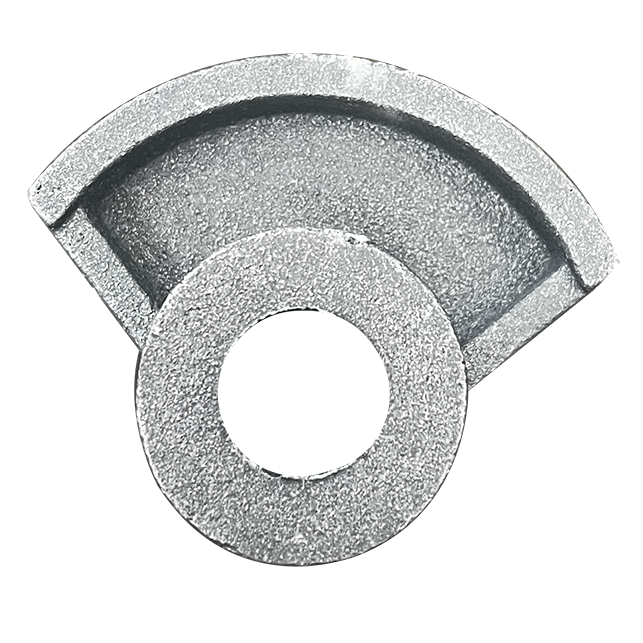تشرینی دووەم . 25, 2024 22:50 Back to list
Innovative Techniques in Aluminum Alloy Casting for Enhanced Performance and Durability
Aluminum Alloy Castings An Overview of Their Importance and Applications
Aluminum alloy castings have become a critical component in various industries due to their lightweight nature, excellent corrosion resistance, and remarkable strength-to-weight ratio. These characteristics make them ideal for applications in automotive, aerospace, electronics, and construction sectors. As technology advances, the demand for aluminum alloy castings continues to rise, driven by the need for durable, reliable, and efficient materials.
Understanding Aluminum Alloys
Aluminum alloys used in casting are typically divided into two main categories wrought and cast alloys. Cast aluminum alloys contain various alloying elements, including silicon, zinc, magnesium, copper, and manganese, which enhance their properties. The most common casting alloys are categorized by their primary alloying element, with silvery-colored aluminum-silicon (A356, A380) and aluminum-copper (A201) alloys being some of the most popular. Each alloy possesses unique characteristics that make them suitable for specific applications. For example, silicon improves fluidity and shrinkage properties during the casting process, while magnesium contributes to increased strength.
Casting Processes
There are several methods for creating aluminum alloy castings, including sand casting, die casting, investment casting, and permanent mold casting. Each method has its advantages and disadvantages
1. Sand Casting This is one of the oldest and most versatile casting methods, where mold patterns made of sand and binder are used to create the desired shape. It can accommodate large and complex geometries but has limitations in surface finish and dimensional accuracy.
2. Die Casting Utilizing high pressure to inject molten aluminum into a mold, die casting provides excellent dimensional accuracy and surface finish. It is suitable for high-volume production but may not be ideal for large parts due to mold costs.
3. Investment Casting This process involves creating a wax pattern covered in a ceramic shell. Once the shell hardens, the wax is melted away, leaving a cavity for casting. This method is known for its intricate designs and precision but can be more labor-intensive and costly.
aluminum alloy castings

4. Permanent Mold Casting In this process, molten aluminum is poured into a reusable metal mold. This technique offers good surface finish and dimensional accuracy but can also be limited by part complexity.
Applications of Aluminum Alloy Castings
The applications of aluminum alloy castings are vast and diverse. In the automotive industry, lightweight aluminum components are crucial for enhancing fuel efficiency and reducing emissions. Components such as engine blocks, transmission cases, and wheel rims often utilize aluminum castings.
Aerospace is another sector that significantly benefits from aluminum alloy castings. The lightweight and high-strength properties of these materials reduce aircraft weight and, consequently, fuel consumption. Besides structural components, aluminum castings are also important in creating intricate parts like turbine housings and landing gear components.
In the electronics industry, aluminum castings are extensively used in housing and enclosure applications. The excellent thermal conductivity of aluminum helps dissipate heat quickly, ensuring optimal performance and longevity for electronic devices.
Furthermore, in construction, aluminum alloy castings are used in various architectural elements and structural components. The corrosion-resistant nature of aluminum makes it ideal for outdoor applications, ensuring durability in challenging environments.
Conclusion
In summary, aluminum alloy castings hold a pivotal role across multiple industries due to their exceptional properties. As technology continues to evolve, the advancements in aluminum alloy casting processes will likely lead to even more innovative applications, contributing to the development of more efficient and sustainable products. The future of aluminum alloy castings appears bright, promising enhanced functionalities and capabilities that meet the needs of modern engineering and design challenges.
-
Centrifugally Cast Iron Water Main Pipe | Ductile Iron Solutions
NewsAug.24,2025
-
Durable Cast Steel Concrete Pipe Mold Bottom Rings & Base Trays
NewsAug.23,2025
-
Centrifugally Cast Iron Water Main Pipe for Reliable Mains
NewsAug.22,2025
-
Durable Centrifugally Cast Iron Water Main Pipe
NewsAug.11,2025
-
Centrifugally Cast Iron Water Main Pipes for Reliability
NewsAug.10,2025
-
High-Quality Centrifugally Cast Iron Water Main Pipes
NewsAug.09,2025


